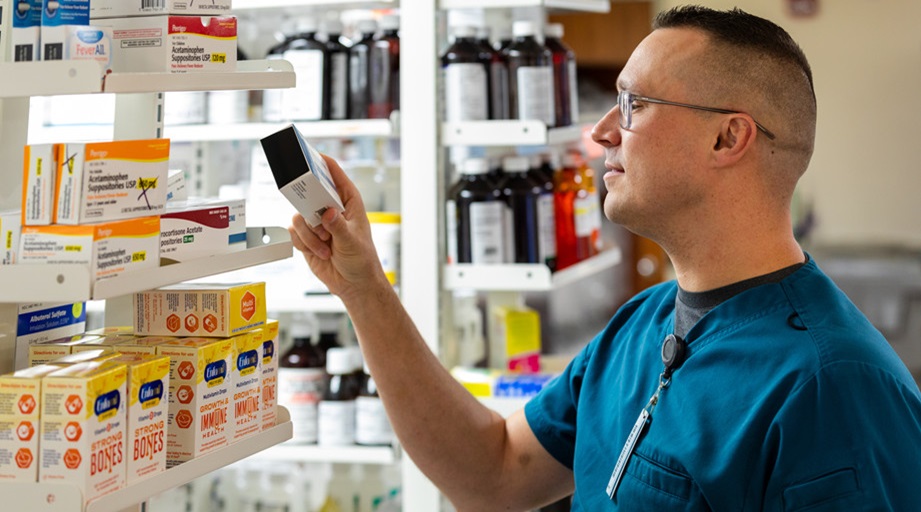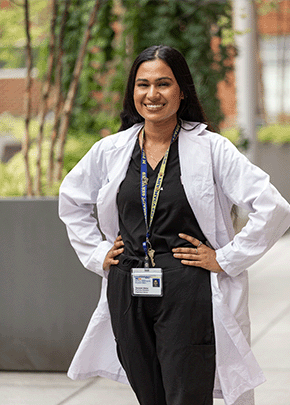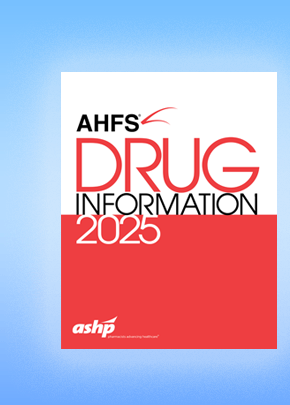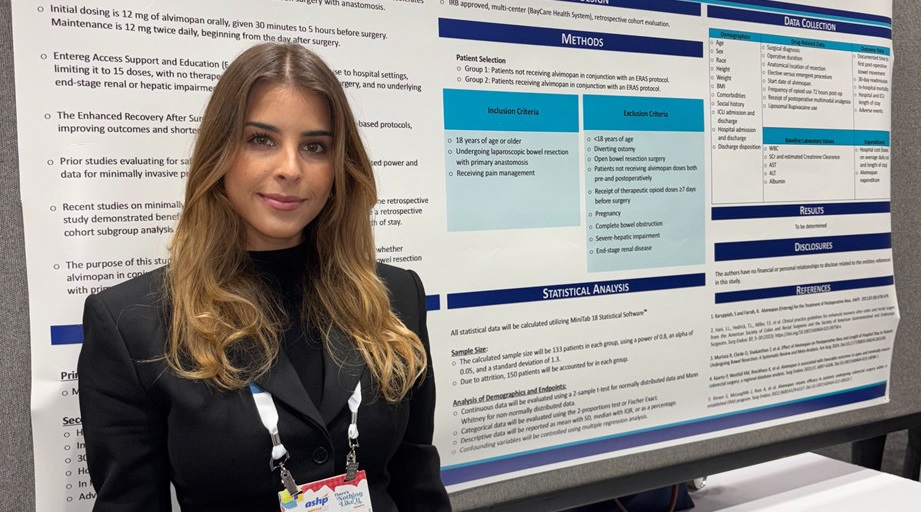
When pharmacy resident Margarita Kanaeva presented her research poster at the Midyear Clinical Meeting & Exhibition this past December, she gained a fresh appreciation for the real-world application of scientific research.
“You’re not just doing research to check a box. You’re not doing it for a passing grade,” Kanaeva said. “You’re doing research to provide patients with better treatment options, resulting in better outcomes.”
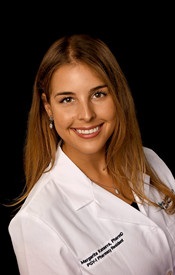
Kanaeva, a first-time Midyear attendee, said it was inspiring to learn about current trends in pharmacy and to meet fellow pharmacists who have an affinity for research — including those who were interested in her project and who asked questions during the poster session.
Kanaeva is completing a postgraduate year 1 (PGY1) pharmacy residency program at St. Anthony’s Hospital in Florida (part of the BayCare health system). Her longitudinal research project is a retrospective analysis of whether alvimopan, used in conjunction with Enhanced Recovery After Surgery (ERAS) protocols, hastens the return of normal bowel function in BayCare patients who have undergone a minimally invasive bowel resection procedure.
The project includes a clinical component — alvimopan has not been well studied in laparoscopic procedures — and an economic component, because the drug adds to the cost of these surgeries.
Kanaeva said that her project has reinforced her connection to her patients by focusing on how to improve their clinical outcomes and, potentially, reduce the cost of their care.
“Our hypothesis was that there would be no statistically significant difference in return to normal bowel function in minimally invasive procedures with the intervention of alvimopan, compared to ERAS alone,” Kanaeva said.
Kanaeva was deep into the data-gathering portion of her project in mid-January and looking ahead to finishing the statistical analysis and write-up before she completes her residency this year.
“It has been a lot of work,” she said. “I’ve done both undergraduate and postgraduate research in the past and expected it to be challenging, but doing your own research is a different beast. With a busy residency schedule, you have to learn time management skills and carve out the time for your project, because it really becomes your baby.”
Also attending the Midyear as a first-time poster presenter was Aminah Anderson, a PGY1 resident at Northwest Hospital in Randallstown, Maryland. Anderson, who is on track to be the new program’s second-ever graduate this year, said her Midyear experience was exciting and rewarding — but also overwhelming.

“That was my first time presenting research, ever,” she explained. “It was my first Midyear, so I really didn’t know what to expect. ... But my presentation went really well. A lot of people asked me questions.”
Anderson is conducting a retrospective review of empiric antimicrobial coverage for community acquired pneumonia (CAP) at Northwest Hospital, with a focus on potentially inappropriate vancomycin and linezolid use. Her population of interest is patients who receive one of these antimicrobials without fitting the criteria for methicillin-resistant Staphylococcus aureus (MRSA) infection.
Guidelines from the Infectious Diseases Society of America generally recommend against the use of vancomycin and other “anti-MRSA” antimicrobials for non-severe CAP in patients with no major comorbidities or risk factors for drug-resistant infection.
“My goal is to identify how many patients are coming in with MRSA pneumonia, look at the empiric coverage that they’ve gotten, and then hopefully provide education for the providers on using the guidelines and looking at the risk factors to determine if you need these anti-MRSA agents,” Anderson said.
Through mid-January, her ongoing chart review suggested that fewer than 5% of patients who sought treatment for CAP had MRSA-associated pneumonia. But roughly half had received an anti-MRSA antimicrobial as empiric therapy.
Anderson said her guideline-focused project was inspired by her passion for infectious diseases pharmacy. She hopes her work will bolster the hospital’s antimicrobial stewardship and improve the care of patients in the community.
Student pharmacists also had a strong presence at the Midyear poster sessions — including first-timer Valerie Fortouna, who is finishing her final year at the Rutgers University Ernest Mario School of Pharmacy in New Jersey.

Fortouna retrospectively examined the use and safety profile of sodium zirconium cyclosilicate for the management of hyperkalemia in a community hospital. She said the drug is of interest because it’s a fairly new alternative to sodium polystyrene sulfonate for the hospital’s prescribers, but optimal use hasn’t yet been established.
“We saw that most patients received one-time doses for treatment of hyperkalemia, with about 11% of patients requiring repeat doses,” Fortouna said. “So it seems like the medication as a one-time dose may be an option for urgent reduction in potassium levels. But you would need more prospective studies to confirm the efficacy of the regimen.”
Fortouna had clear advice for other research-minded students who have the opportunity to present their work at the Midyear.
“Definitely do it,” she said. “It was exciting. I think it was a little bit overwhelming with the amount of people that were there. But overall, I enjoyed doing my poster presentation and getting to talk to different people ... who also understand the topic.”
Fortouna said she’s been involved in several research projects at Rutgers, and she wants to focus on clinical pharmacology research and clinical trials as a pharmacist.
Anderson, who has an MBA in addition to her PharmD degree, said she’s eager to develop her clinical skills as a practicing pharmacist for the foreseeable future but may eventually transition to an administrative role to support up-and-coming pharmacists.
Kanaeva is completing a preceptor track alongside her residency program. She envisions doing research as an inpatient practitioner, performing longitudinal research and mentoring students, or becoming a medical science liaison.
With residency training, she said, “there’s just so many different avenues you can take, and so many different jobs that could be a good fit. ... The possibilities are endless.”






